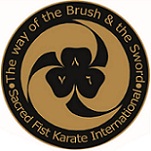|
The origins of
Tahtib seem to go back to the 2nd millenium BC,some of Tahtib gestures are
engraved in the walls of three tombs among the 39 rock-cut tombs of the
archaeological site of Beni Hasan,[citation needed] in the eastern bank of
the Nile, near the city of Minya. The necropolis comprises tombs of
officials (nomarchs) of the XI and XII dynasties of ancient Egypt.
Ancient Egyptians performed stick fencing or stick fighting as a form of
entertainment.This type of fencing was probably based on actual fighting
systems used in combat with a shield and a sword- which
then evolved into a system with its own rules and methods. The fighting
stick does not appear to have been used as a, rather it was used primarily
as a training tool and/or for sport.There were advantages of teaching stick
fighting, along with other combat sports such as a wrestling, the main
advantage being that the Egyptian army could be kept trained and ready for
war. In many respects it resembles the sport of single stick.
The stick itself is about four feet in length and is called an Asa,
Asaya or Assaya, or Nabboot. It is often flailed in
large figure-8 patterns across the body with such speed and violence that
the displacement of air is loudly discernible. There is another form
practiced from horseback known as “Horse Stepping” which uses a stick that
is nearly 12 feet (3.7 m) long |













